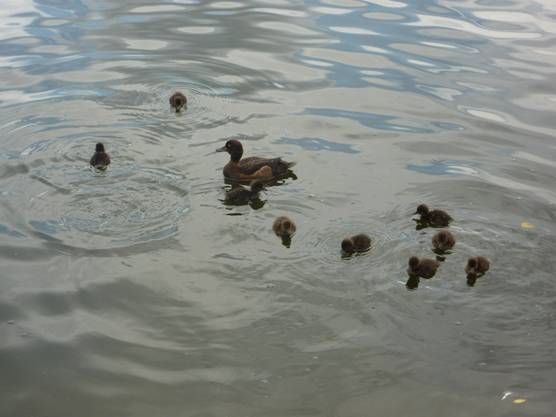
Salty Sam’s Fun Blog for Children
Number 389
Edward Jenner
Hello Everyone

Have you ever had an injection?
Most children have at one time or another.
Some people are terrified of them, some people don’t mind them. The doctor giving you one will tell you that having it is for your own good.
An injection may be given to you to help you get better from an illness or actually to prevent you getting one in the first place.
Giving injections to prevent illness is called immunisation.
You may take your cat or dog to the vet to get an injection too. Some people call these injections ‘shots’. You may do this once every year.
You may not know why this happens.
lf l tell you the story of Edward Jenner, then you will understand.
Edward Jenner, the pioneer of smallpox vaccination is now referred to as the Father of lmmunology.
Let me tell you his story…
Edward Jenner worked as a country doctor. The people from surrounding villages came for treatment and surgery to his property and he also worked on developing a cure for smallpox.
The house that he lived in, in Berkeley, Gloucestershire (built in 1702) has now become a museum to display artefacts (things) from his life and work.
He lived there from 1785 until his death in 1823.
Born to a vicar and his wife on 17th May in 1749, Edward was the eighth of nine children. He had lost both parents by the time he was five years old so he was brought up by an older sister and an aunt.
Edward became an apprentice to a doctor for many years in Chipping Sodbury near Bristol and St George’s Hospital, but returned to Gloucestershire to set up his own practice.
At the time, smallpox was a hideous disease that deformed the skin and could eventually take people’s lives. lf people did not die from it, and a third of the people who contracted it did, they were left terribly scarred from its effects.
lt was known as the speckled monster.
Thousands of people would die from it in a year.
lt was one of the most terrible diseases on Earth. lt had been around for thousands of years and was introduced to Europe about 1,500 years ago.
There were many outbreaks in the Middle Ages and the worst effected areas would have been poor areas with cramped living conditions but all levels of society would have been affected.
Millions died from this highly infectious disease over the centuries and when it was taken to the New World it decimated the local populations there.
Like all good doctors and scientists, Jenner was a good observer and he noticed that milkmaids had very lovely skin. There was an old tale that they never seemed to catch smallpox and he wondered why this was.
Jenner had been interested in nature and his countryside surroundings since he was a child.
(He was the first to leave written records describing how cuckoos leave their eggs in other birds’ nests where they will hatch. The cuckoo chicks then push their rivals out and receive full attention from parent birds, which of course, are not their real parents.)
The milkmaids did, however, catch cowpox which was a similar disease but not so deadly.
The young women caught cowpox from milking cows and got blisters on their hands.
Jenner concluded that the pus in the blisters somehow protected the women from getting smallpox.
ln May of 1796, he decided to try his theory out by injecting some pus taken from a milkmaid called Sarah Nelms who had fresh cowpox blisters on her hands and arms into an eight year old boy called James Phipps. He was the son of Jenner’s gardener.
l am sure you will also want to know that the cow Sarah caught cowpox from was called Blossom – and from that time, a new way of tackling diseases blossomed forth!
Sorry about that little joke.
He repeated the process over a number of days, increasing the amount that he gave to James.
James became ill with a slight fever and loss of appetite, but after a few days made a full recovery and had no side effects.
Then, a few weeks later, in July, Jenner took a big risk and injected James with smallpox.
He felt sure the experiment would work and used James as his guinea-pig.
James remained well.
This was because his body was prepared to receive the disease. The boy’s own immune system had built up a resistance after dealing with cowpox and so could fight off the smallpox.
lnoculation against smallpox previously to this experiment had been with the smallpox puss. The idea had been brought to England in 1721. This treatment did not always work. Often the patient contracted the full disease and died.
Jenner had been inoculated in 1757 at the age of eight. He had developed some symptoms of the disease but recovered and become immune to catching it again.
Jenner used pus created by the much milder disease of cowpox for his vaccination. This idea worked much better.
ln the months that followed, Jenner repeated his experiment to check his finding would be repeated.
ln 1798, he published his findings.
Jenner set off for London to share his ideas with other doctors.
They would not believe that a country doctor with little standing in the medical community could make such a discovery and his claims were rejected and ridiculed (laughed at).
But the proof of Jenner’s claims was indisputable, and in the end the medical profession had to accept that what he was telling them was true.
lt became compulsory for everyone in the country to be inoculated against the disease and eventually the disease was wiped out. From 1840, the government banned all treatments for smallpox except Jenner’s. This decision had a huge impact on the death rate from smallpox. The number of deaths from smallpox fell radically (a lot).
The word vaccination comes for the Latin for cow – vacca. The Latin word for cowpox is vaccinia.
The practice of vaccinating then spread through Europe and New England from the beginning of the nineteenth century.
Vaccinations for other diseases would follow in the wake of Jenner’s new way of preventing disease.
Jenner did not patent his discovery as it would have made it too expensive for many people to afford. lnstead he gave it to the world as a gift.
That was nice of him, wasn’t it?
He was, however, rewarded with £30,000 by Parliament for the work he had contributed to medical science.
Blossom’s horns are on display in the museum in Gloucestershire and a statue of Jenner was erected in Hyde Park.
Jenner married in 1788 and had four children. The family lived in the Chantry House which became the Jenner Museum in 1985. There is a small hut in the garden which he called the Temple of Vaccinia. Here he vaccinated the poor for free.
The museum is open for people to visit and the little house in the garden is still there too.
lt was many years after Jenner’s discovery that smallpox was eradicated from Britain.
And in 1980, it was declared that smallpox had been eradicated from the whole world!
lf you like my blog, please support it by telling all your friends and followers about it.
Thank you!
And see you again next Fun Friday!
Love and kisses
Salty Sam

www.christina-sinclair.com


Bill and Bob’s Joke of the Week![]()
![]()
Bill: A man goes to see a doctor and looks a bit wobbly on his legs.
Bob: Oh, yes?
Bill: And the doctor says, “Have you got vertigo?”
And the man say, “Not really, l live just around the corner.”

Salty Sam © Christina Sinclair 2015
Unauthorized use and/or duplication of material from this blog without express and written permission from this blog’s author and owner is strictly prohibited.
Links may be used to www.christina-sinclair.com

Picture Gallery
 Edward Jenner
Edward Jenner
 The Temple of Vaccinia
The Temple of Vaccinia


 THE SALTY SAM NEWS DESK
THE SALTY SAM NEWS DESK

Something very sad happened in Auntie Alice’s garden this week.
One of her chickens died. The children were very upset.
They had named all the chickens and it was Suzy who had fallen asleep one night and not woken up the next morning.
Auntie Alice said that this is how nature is sometimes.
When she had rescued the chickens they were already coming to the end of their egg-laying life. They had all had a very happy time living in her garden.
They had the freedom to roam about once they had settled in, and could scratch about and find the food they liked to eat.
They lived out in the sunshine in the daytime and had a cosy coop to snuggle up in at night.
They all had the companionship from the other chickens as well as the care from the humans that looked after them.
Auntie Alice said that they could bury Suzy in a quite corner on the garden and leave some flowers in a jam jar for her.
The chicken knew how much the children loved her and that was the best present anyone could ever have.
She said that all animals go to heaven, just like people, and they had an even nicer life when they got there than they had here.
That evening Auntie Alice had a little think and in the morning telephoned Captain Jack and me and asked if we could build her another chicken coop so that she could rescue some more chickens.
We, of course, said yes, and she went down to the Rocky Bay Pet Shop to buy some more water bowls.


*********************
TO ADVERTISE ON THIS BLOG
PLEASE CONTACT:
christina.sinclair.ads@aol.co.uk
*********************

 Quick Quiz
Quick Quiz
What kind of birds do these babies belong to?
- chick
- duckling
- gosling
- cygnet
- fledgling

Ducklings



lt’s the Weekend!

HOW TO MAKE A DOLL’S BLANKET
If you would like to make a blanket for a doll’s cot or pram or some blankets for when you play ‘hospitals’ with your dolls, here is a lovely pattern to use.
The pattern is for a knitted square.

You can make as many as you need to make up a blanket.
You can make them all the same colour or use two colours to make up a chequer board pattern.
You could use three colours and line the colours up diagonally.
You will need to draw up a pattern so that you will know how many squares of each colour you will need before you start.
You could use lots of different colours and make a multi-coloured blanket.
Otherwise you could use the pattern to make a larger blanket for a pram for a baby.
When you sew the squares together, sew them into strips first and then sew the strips together.
DOLL’S COT BLANKET
Using 4mm knitting needles and dk yarn cast on 18 stitches
Knit 6 rows of garter stitch
Knit 1 row
Knit 4, purl 10, knit 4
Repeat the last 2 rows 6 times
Knit 6 rows of garter stitch
Cast off

Please note that the material on this blog is for personal use and for use in classrooms only.
It is a copyright infringement and, therefore, illegal under international law to sell items made with these patterns.
Use of the toys and projects is at your own risk.
©Christina Sinclair Designs 2015


Quick Quiz Answers
- chick – hen
- duckling – duck
- gosling – goose
- cygnet – swan
- fledgling – bird living in a nest

A swan


